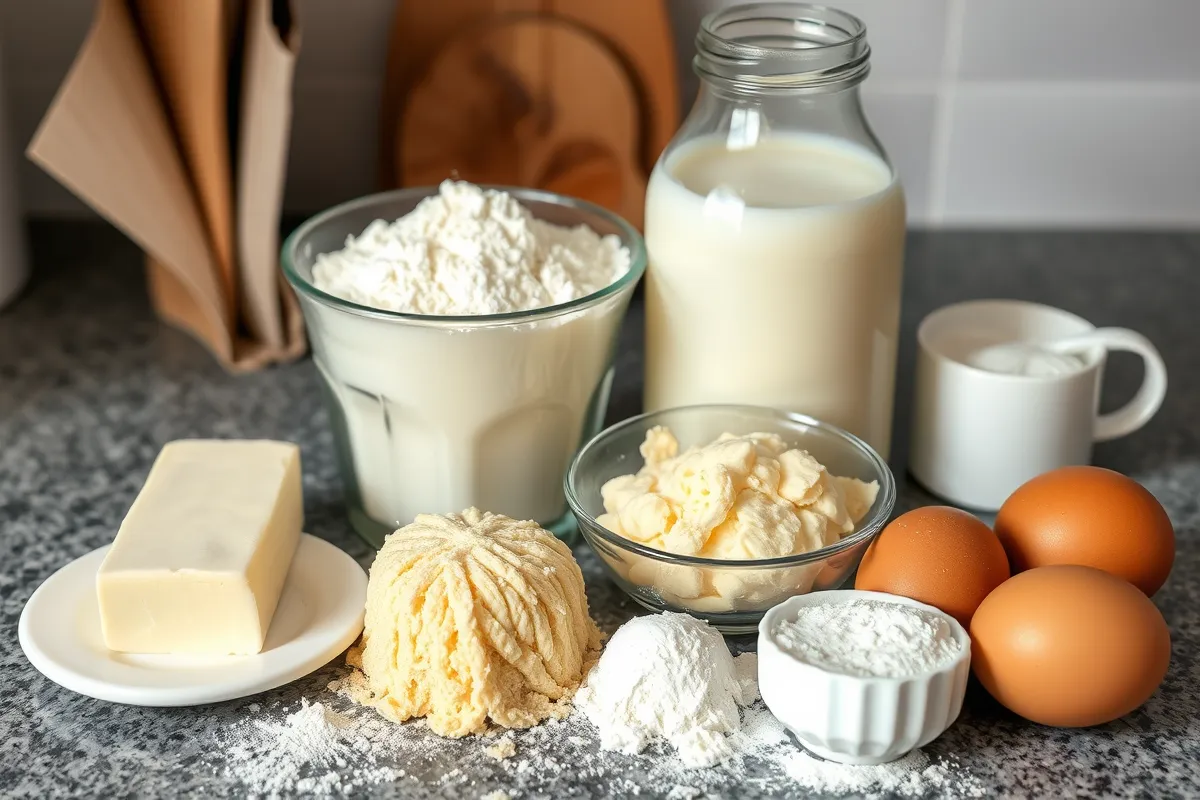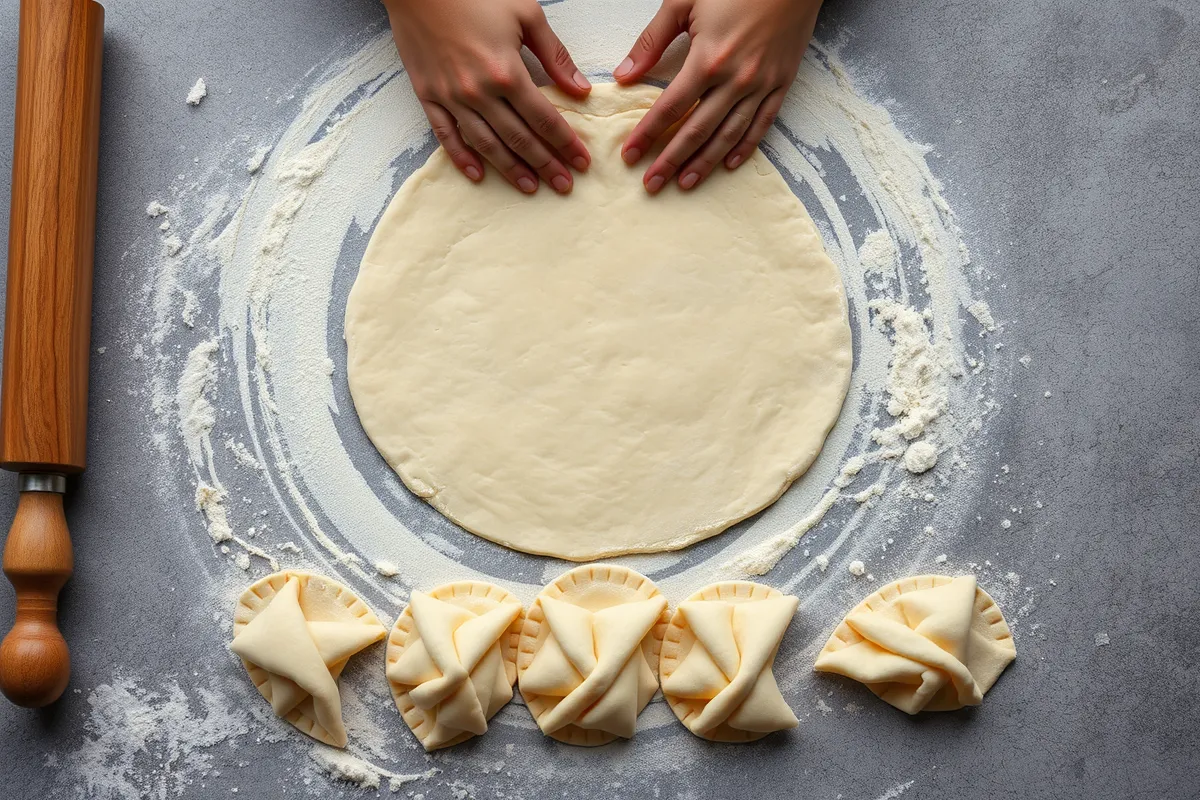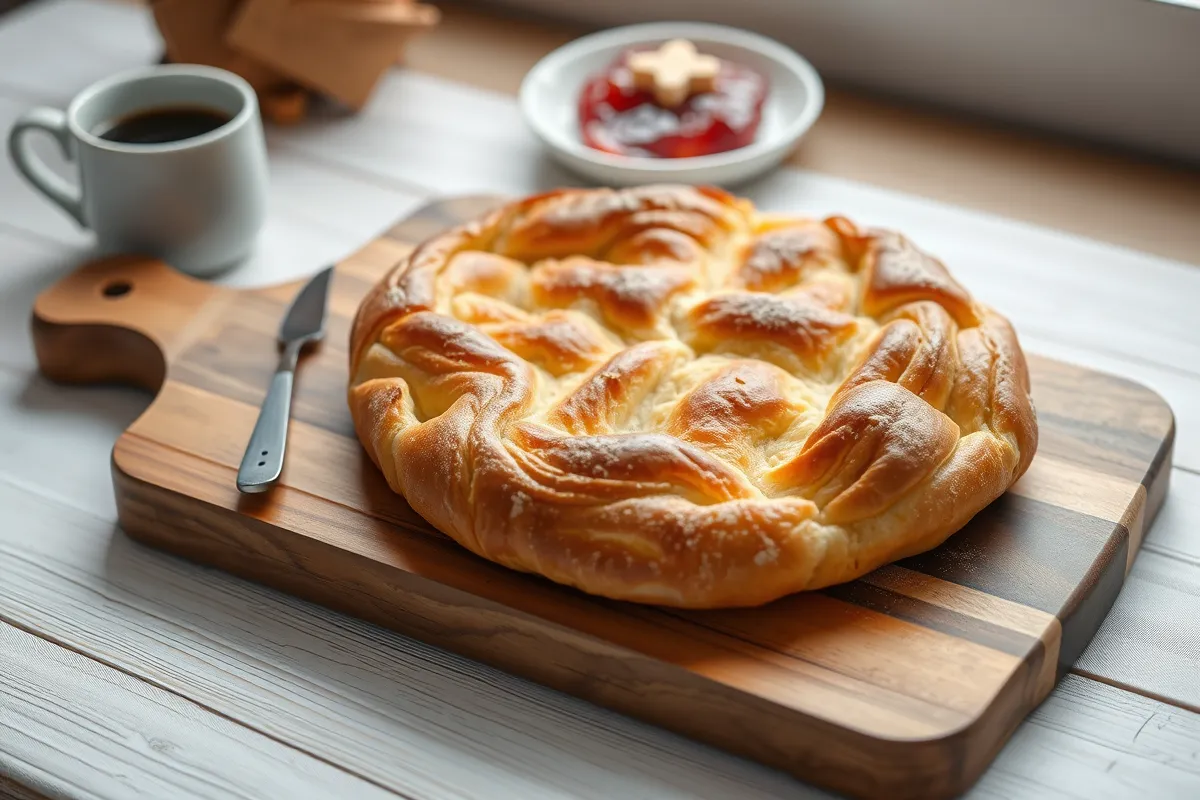Introduction
Gipfeli, often referred to as the Swiss version of a croissant, is a delicious, buttery pastry that’s perfect for breakfast or a mid-day treat. Unlike its French cousin, Gipfeli has a slightly different texture and shape, making it unique to Swiss culture. Whether you’re a novice baker or a seasoned pastry chef, this article will walk you through every detail of the Gipfeli recipe, from its rich history to troubleshooting tips. We’ll also explore the key ingredients, step-by-step instructions, popular variations, and more. If you’re ready to impress your friends or family with an authentic homemade Swiss pastry, this guide will be your go-to resource.
Introduction to Gipfeli Recipe
What is a Gipfeli?
If you’ve ever wondered what makes a Gipfeli stand out in the world of pastries, you’re not alone. This Swiss delight is often mistaken for the classic croissant due to its shape and flaky texture. However, Gipfeli has its own identity, deeply rooted in Swiss tradition, with subtle differences in its dough composition and preparation method. In Switzerland, it’s a breakfast staple, often served warm with butter and jam or enjoyed with a morning coffee.
Understanding the Origin of Gipfeli Recipe
To appreciate the Gipfeli recipe, it helps to understand where it comes from. The word “Gipfeli” stems from the Swiss German dialect and translates roughly to “little peak” or “little crescent,” which describes its crescent shape. While it bears a striking resemblance to the French croissant, Gipfeli is more than just an imitation. Its history ties closely to Swiss baking traditions that emphasize simplicity and high-quality ingredients. Unlike croissants, which are typically more buttery and flaky, Gipfeli tends to be denser with a subtler flavor, often made with milk and a touch of sugar for a softer texture.
Why is Gipfeli Recipe Unique?
The uniqueness of Gipfeli lies in its texture and ingredients. Unlike the French croissant, which boasts a crisp outer layer and airy interior, the Gipfeli is typically softer and denser, making it more suitable for both sweet and savory applications. The dough often incorporates ingredients like milk and sugar, giving it a slightly sweeter taste and richer mouthfeel. It’s also a bit smaller than a croissant, making it a great snack option.
Another factor that sets Gipfeli apart is its versatility. While traditional croissants are typically enjoyed plain or with butter, Gipfeli can be filled with chocolate, almond paste, or even savory ingredients like cheese or ham (although in this article we’ll avoid certain meats). You can also experiment with different flours—whole wheat, gluten-free, or organic options can add a healthy twist to this classic pastry.
Ingredients for Gipfeli Recipe

Essential Ingredients for Making Gipfeli
Crafting the perfect Gipfeli starts with the right ingredients. Whether you’re aiming for a traditional buttery Gipfeli or looking to create a unique variation, it all begins with a few essential components. The balance of these ingredients will not only affect the flavor but also the texture and structure of the pastry. Let’s break down what you’ll need to get started.
Basic Ingredients for Gipfeli recipe
When it comes to the foundation of a Gipfeli recipe, you’ll find that the basic ingredients are quite simple, but each plays a critical role in the final product. Here’s what you’ll need:
- Flour: A good quality all-purpose flour forms the backbone of the dough. It provides structure while also allowing for the soft, flaky layers that define Gipfeli.
- Butter: Butter is arguably the most important ingredient, responsible for the rich, buttery flavor and flaky texture. Make sure to use unsalted butter for better control of the dough’s salt content.
- Yeast: Active dry yeast or fresh yeast is essential for making the dough rise, giving Gipfeli its light, airy texture.
- Milk: Warm milk is often added to enrich the dough and give it a softer texture compared to the water-based dough used in croissants.
- Salt: Just a pinch of salt balances out the sweetness and enhances the overall flavor.
Each of these basic ingredients has a specific purpose, and leaving out or replacing any of them can dramatically change the final outcome.
Optional Ingredients for Variation Gipfeli Recipe
The beauty of the Gipfeli recipe lies in its versatility. While the traditional version is delicious on its own, you can easily incorporate additional ingredients to create different flavors and textures. If you’re feeling adventurous, here are some options to consider:
- Chocolate: For a sweet twist, add a rich, creamy chocolate filling. Dark chocolate works best as it balances out the buttery dough without being overly sweet.
- Almonds: Almond paste or crushed almonds can be folded into the dough for an extra layer of flavor and texture. This gives your Gipfeli a delightful nutty taste.
- Fruit Fillings: Apricot or raspberry preserves make excellent fillings for a fruity Gipfeli. Just be careful not to overfill, as the pastry can burst during baking.
- Cheese: For a savory option, consider adding cheese like Emmental or Gruyère. It creates a savory, melty center perfect for a light lunch or snack.
These optional ingredients allow you to get creative with your Gipfeli and tailor it to your taste preferences. Plus, they add a unique touch that can elevate a simple pastry into something truly special.
Choosing Quality Ingredients for Gipfeli Recipe
In any pastry recipe, the quality of the ingredients you use will directly affect the final product. When it comes to making Gipfeli, this principle holds true. The key to achieving a truly exceptional pastry is using high-quality, fresh ingredients. Here’s why:
- Butter: High-quality butter is crucial for the best flavor and texture. Look for butter that has a high-fat content (around 82%) as this will give your Gipfeli a rich, flaky texture. Cheap butter can have a higher water content, which can lead to soggy dough instead of the desired layers.
- Yeast: Fresh yeast gives a much better rise compared to old or expired yeast. Always check the expiration date and, if possible, opt for fresh yeast over dry. This ensures that your dough rises properly, resulting in a light and airy pastry.
- Flour: Organic or high-quality all-purpose flour is ideal for making Gipfeli. It provides a fine crumb structure and supports the layering of the dough. Low-quality flours may result in a tough, dense pastry rather than the soft, flaky texture you’re aiming for.
Tip: When sourcing ingredients, it’s often worth spending a little extra on the best quality butter and flour you can find. The difference in taste and texture will be noticeable. For those interested in whole foods or sustainable practices, organic options are always a good choice. You might also want to visit local bakeries or specialty stores for fresher, higher-grade ingredients.
For more detailed information on how to bake with high-quality ingredients, check out this comprehensive guide on how to bake puff pastry perfectly.
Step-by-Step Guide to Making Gipfeli

Preparing the Dough
The dough is the heart of any good Gipfeli recipe. It requires time and care, but the results are well worth it. Follow these steps to make the dough from scratch.
How to Make Gipfeli Dough from Scratch
- Mixing the Dough: Start by warming your milk slightly—it should be warm to the touch but not hot. Combine the yeast with the warm milk and a pinch of sugar to help activate the yeast. Let it sit for about 5-10 minutes until it becomes frothy.
- Kneading the Dough: In a large mixing bowl, combine the flour, salt, and butter. If you’re using a stand mixer, use the dough hook attachment. Slowly pour in the milk and yeast mixture while the mixer is on low speed. Once combined, increase the speed and knead the dough for about 10 minutes, or until it’s smooth and elastic.
- Resting the Dough: Cover the dough with a clean kitchen towel and let it rest in a warm place for about an hour, or until it has doubled in size. This resting period allows the yeast to work its magic, developing the light, airy texture that makes Gipfeli so irresistible.
Rolling and Shaping Gipfeli
Now that your dough is ready, it’s time to shape it into those classic crescent shapes that define Gipfeli.
How to Roll the Dough for Gipfeli
On a lightly floured surface, roll out the dough into a large rectangle about ¼ inch thick. It’s important to roll the dough evenly to ensure uniform layers. Too thick, and the Gipfeli won’t bake evenly; too thin, and they could burn or become too crisp.
Using a sharp knife or a pizza cutter, divide the dough into triangles. Each triangle should be about 5 inches at the base and 7 inches tall. These measurements ensure that your Gipfeli have the perfect size and shape.
Properly Shaping Gipfeli for Authentic Look
To achieve the signature Gipfeli shape, take each triangle and gently stretch the base slightly wider. Then, starting from the base, roll the dough tightly toward the tip. As you roll, slightly curve the dough to form a crescent shape.
If you’re adding a filling like chocolate or almonds, place a small amount at the base of the triangle before rolling it up. Be careful not to overfill, as this can cause the Gipfeli to burst open during baking.
Common Mistakes When Rolling and Shaping Dough
One common mistake is not rolling the dough evenly, which can result in uneven baking. Also, avoid rolling the dough too loosely; this can lead to a Gipfeli that unravels during baking. Another pitfall is using too much flour on the rolling surface. While it prevents sticking, excess flour can make the dough dry and tough.
Proofing and Baking the Gipfeli Recipe
Proper proofing and baking are essential for getting the ideal texture for your Gipfeli. Let’s walk through these final steps.
Ideal Proofing Conditions
Once your Gipfeli are shaped, place them on a baking tray lined with parchment paper. Cover them with a clean towel and let them proof for about 30-45 minutes in a warm environment. Proofing allows the dough to rise again, resulting in a lighter, airier pastry.
Baking Temperature and Timing
Preheat your oven to 375°F (190°C). Brush the Gipfeli with a bit of egg wash to give them a golden, shiny finish. Bake them for 15-20 minutes, or until they are golden brown and crispy on the outside.
By paying attention to these steps, you’ll be rewarded with perfectly baked, flaky Gipfeli that are sure to impress!

